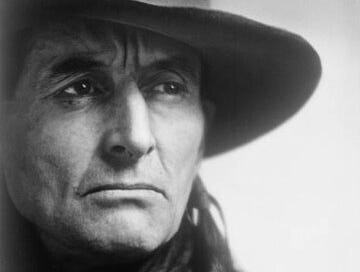Grey Owl: The Unlikely Prophet of Wilderness Conservation
The fifth installment of Trailblazers - Legends of the Outdoors
In the early 20th century, a man with piercing eyes and long braids stood before audiences across Canada, the United States, and Britain, delivering impassioned speeches about the urgent need to protect North America’s forests and wildlife. He spoke as Grey Owl, an Indigenous Canadian devoted to conservation. But behind the persona lay Archie Belaney, a British-born man who had fabricated much of his identity. Despite this deception, his influence on environmentalism was profound.
A Reinvented Life in the Canadian Wilderness
Archibald Stansfeld Belaney was born in 1888 in Hastings, England. Fascinated by Native American culture from a young age, he immigrated to Canada in 1906, seeking the wilderness life he had romanticized in books. He lived among the Ojibwe people in northern Ontario, where he learned trapping, survival skills, and the Cree language. Over time, he began presenting himself as part Indigenous, taking on the persona of Grey Owl.
For years, he made his living as a trapper, but the very trade he depended on led to an awakening. Seeing the damage done by over-trapping, particularly to the beaver population, he underwent a radical transformation. He abandoned trapping and dedicated himself to conservation, advocating for the protection of wildlife and the preservation of forests.
The Voice of Conservation
In the 1920s and ‘30s, Grey Owl gained prominence through his writings, including Pilgrims of the Wild and The Adventures of Sajo and Her Beaver People. His books painted the Canadian wilderness as a delicate, living entity under threat from human greed. His work helped shift public perception, emphasizing that nature was not an endless resource to be exploited but a fragile ecosystem in need of stewardship.
His lectures, delivered with the gravitas of an Indigenous elder, resonated deeply with audiences. He captivated crowds with his message that conservation was not just a matter of preserving landscapes but of ensuring the survival of the creatures that depended on them. In a time when industrial expansion threatened North America’s wilderness, his advocacy was groundbreaking.
Portrait by Yousuf Karsh, 1936 (Public domain image due to age)
Legacy and Controversy
Grey Owl’s death in 1938 revealed the truth: he was not Indigenous but an Englishman who had carefully curated his identity. The revelation shocked the public, and some dismissed him as a fraud. Yet, his deception does not erase the impact of his work. He was one of the first voices to bring conservation into mainstream discourse, influencing policies that led to the protection of wildlife habitats in Canada.
Parks Canada honors his contributions by preserving his cabin in Prince Albert National Park, where he lived and wrote much of his work. Today, his legacy is a paradox—an example of how a flawed messenger can still deliver a vital message. His life raises questions about authenticity, but his message about preserving the wild remains as urgent as ever.
Grey Owl’s story is a reminder that sometimes, the fight to protect nature can come from the most unexpected places. However complicated his legacy may be, his passion for the wilderness helped shape the conservation movement as we know it today.
Interested in reading about other trailblazers? You can find the first three installments of this series below:
Edward Abbey: The Voice of the Desert
Aldo Leopold: The Father of the Land Ethic





That's pretty much the whole environmentalist movement in a nutshell.
They are all frauds.